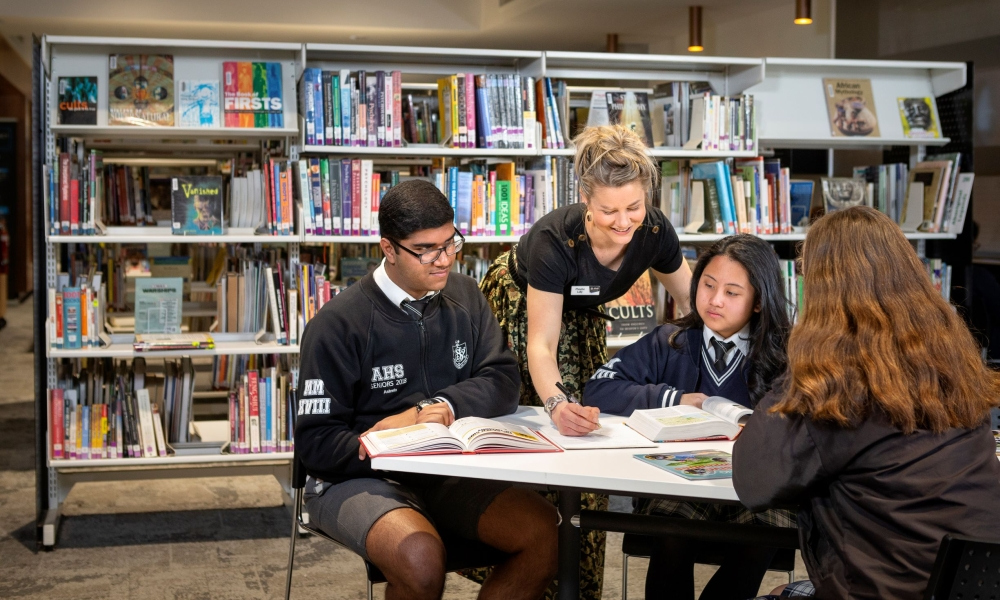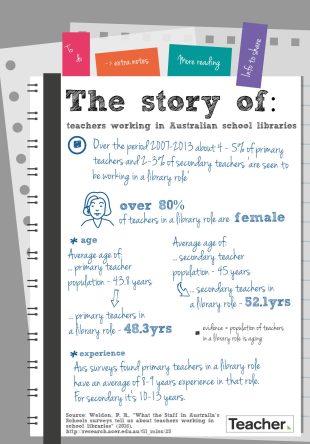A new study using data from South Australian schools shows having a qualified teacher librarian on staff is associated with improved student literacy outcomes.
The Australian Council for Educational Research (ACER) reports the finding stems from a 2019 census commissioned by the School Library Association of South Australia (SLASA). ACER researchers surveyed all 728 Government, Catholic and independent schools in the state and analysed NAPLAN National Assessment Program – Literacy and Numeracy) data from 2018.
ACER's Discover says data show students' reading, writing, spelling, grammar and punctuation outcomes at Years 3, 5, 7 and 9 were significantly associated with the qualification-level of the person who manages the library.
‘Students in schools with a qualified teacher librarian had up to two month's learning gain, compared to students in schools with no staff member managing the library, after taking into account the effect of socioeconomic status. The difference in student literacy outcomes was strongest at Year 9 and weakest at Year 7.'
Researchers detail their findings in a report released this week, School libraries in South Australia: 2019 Census (Dix et al., 2020). Discover says the census collected data on staffing, facilities and the funding of school libraries, along with information about how schools manage services when there is no staffed library provision. It was designed to be answered by any member of the school leadership team.
The census found around six per cent of schools do not have a physical library on site, but all schools can access information services, curriculum resources and library-type reading through a community or mobile library. ‘Most South Australian schools (94 per cent) have someone to manage the library collection and to select resources but less than a quarter (23 per cent) are managed by a qualified teacher librarian. A further 20 per cent of school libraries are managed by a library-qualified school services officer,' Discover reports.
The census found 51 per cent of staff managing the state's school libraries are not library-qualified, and about one-third (36 per cent) of library staff are either School Services Officers or Education Support Officers with no teaching or library qualifications. Schools with an annual recurrent library budget allocation of more than $2500 are more likely to have library staff. Special schools are less likely to have a staffed library.
Researchers suggest one factor that may contribute to the student learning gains is the ability of qualified teacher librarians to free up classroom teachers' time. The census found classroom teachers and other staff members (such as curriculum and faculty leaders) in some schools were responsible for a number of tasks taken on by teacher librarians in other schools. These included managing the school's literacy and reading programs, and managing research, study skills and inquiry learning.
The study found, in addition to the qualification level, the time fraction of the teacher librarian had an impact on the school library's value and effectiveness. ‘The census revealed that 55 per cent of school libraries are managed on the equivalent of less than half a full time equivalent (FTE) position. Nineteen per cent of school libraries are managed full time while 26 per cent are managed between 0.6 and 0.9 FTE,' Discover reports.
Read the full article: Teacher librarians linked to improved student literacy, published in ACER's Discover.
References
Dix, K., Felgate, R., Ahmed, S., Carslake, T., & Sniedze-Gregory, S. (2020). School libraries in South Australia 2019 Census. Australian Council for Educational Research. https://doi.org/10.37517/978-1-74286-583-6
As a school leader, what informs your decision making when it comes to the funding and management of your library and information services? Do you publicly promote this resource as a valued asset of the school? Does the library have a dedicated area on the school website?



